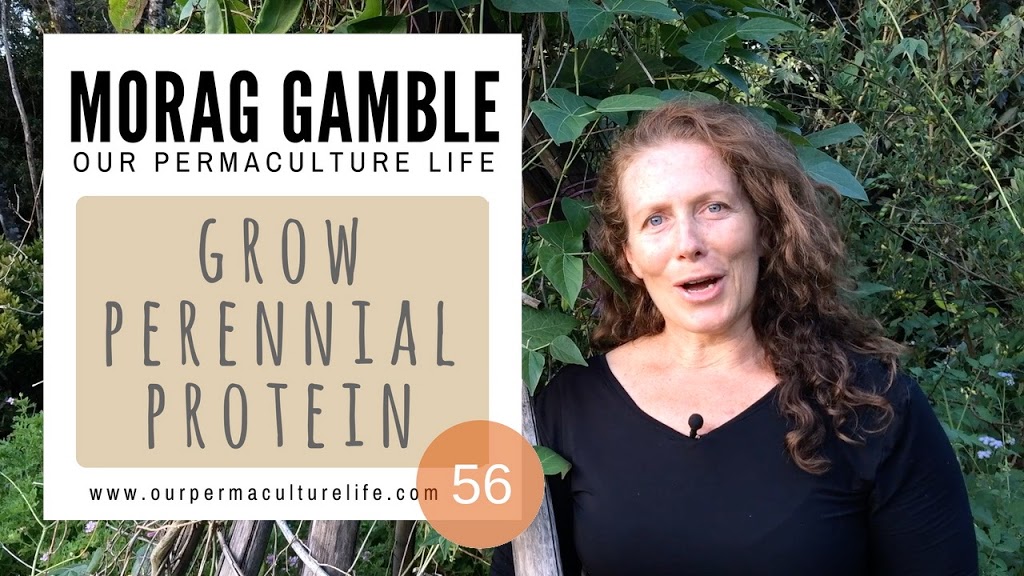We call Madagascar beans (Phaseolus lunatus) our magic beans. They:
- are fast growing
- live for 7 years
- are hardy and low-maintenance
- are adaptable to various soils
- provide abundant protein – great for us!
- produce abundant organic matter – great for soil life!
- are totally edible – all parts
Not only do Madagascar beans grow so fast and produce so much, they also taste great, add lots of fibre and protein into our vegetarian diet, are versatile to cook and, well, look fabulous – large purple-spotted beans! I use them in soups, stews, curries, salads, veggie patties and dips. The beans can also be made into tempeh.
The Madagascar bean vine is a vigorously climbing perennial legume for warmer areas – it thrives in hot humid areas. In my subtropical garden (which can experience frosts in winter), it dies back each winter but happily reshoots when the temperatures rise again.
Each year the vine gets stronger and more productive. The main stem on my vine is now quite substantial. I have it growing on a strong trellis – it needs it!
Madagascar bean is actually a type of lima bean. The white variety is also known as butter bean – a common bean found in cans on supermarket shelves. This bean can be eaten as both young and dried beans. The young pods and leaves are also edible, but need to be cooked well – they can be fibrous and the leaves a bit bitter.
Madagascar bean is an ancient vegetable from the Andes. It was first domesticated in Peru possibly as early as 8000 years ago.
As well as producing food, these beans help create a mass of organic matter, improve the soil, and can be used to create summer shade and screening.
Click here to watch my new short film: Grow Perennial Protein.
NEW ONLINE COURSE – THE INCREDIBLE EDIBLE GARDEN
OPENING 28 JAN: MEMBERSHIP GROUP FOR PERMACULTURE GARDENS AND LIVING
SUBSCRIBE TO MY YOUTUBE
PATREON
If you enjoy my free (and ad-free) blog and youtube clips please consider becoming my patron. https://www.patreon.com/moraggamble



Thanks for this awesome info Morag! I was wondering if you know anything about sword beans? I have one growing in the garden – it's about 2 years old now but there's a surprisingly little amount of info on the internet about which parts are edible (and some of the info is conflicting too!).